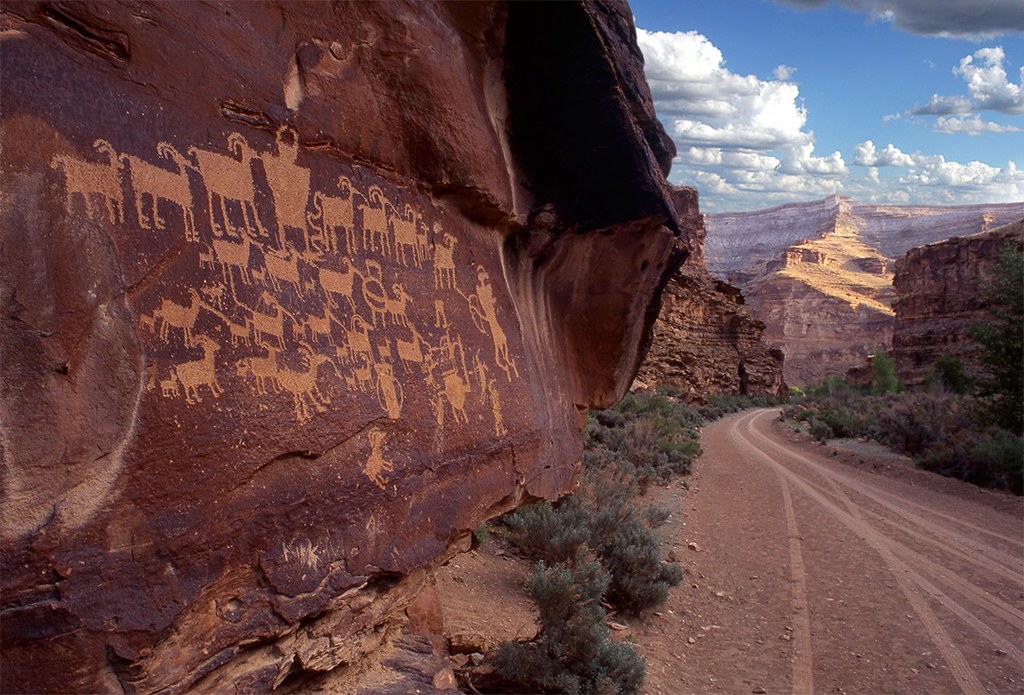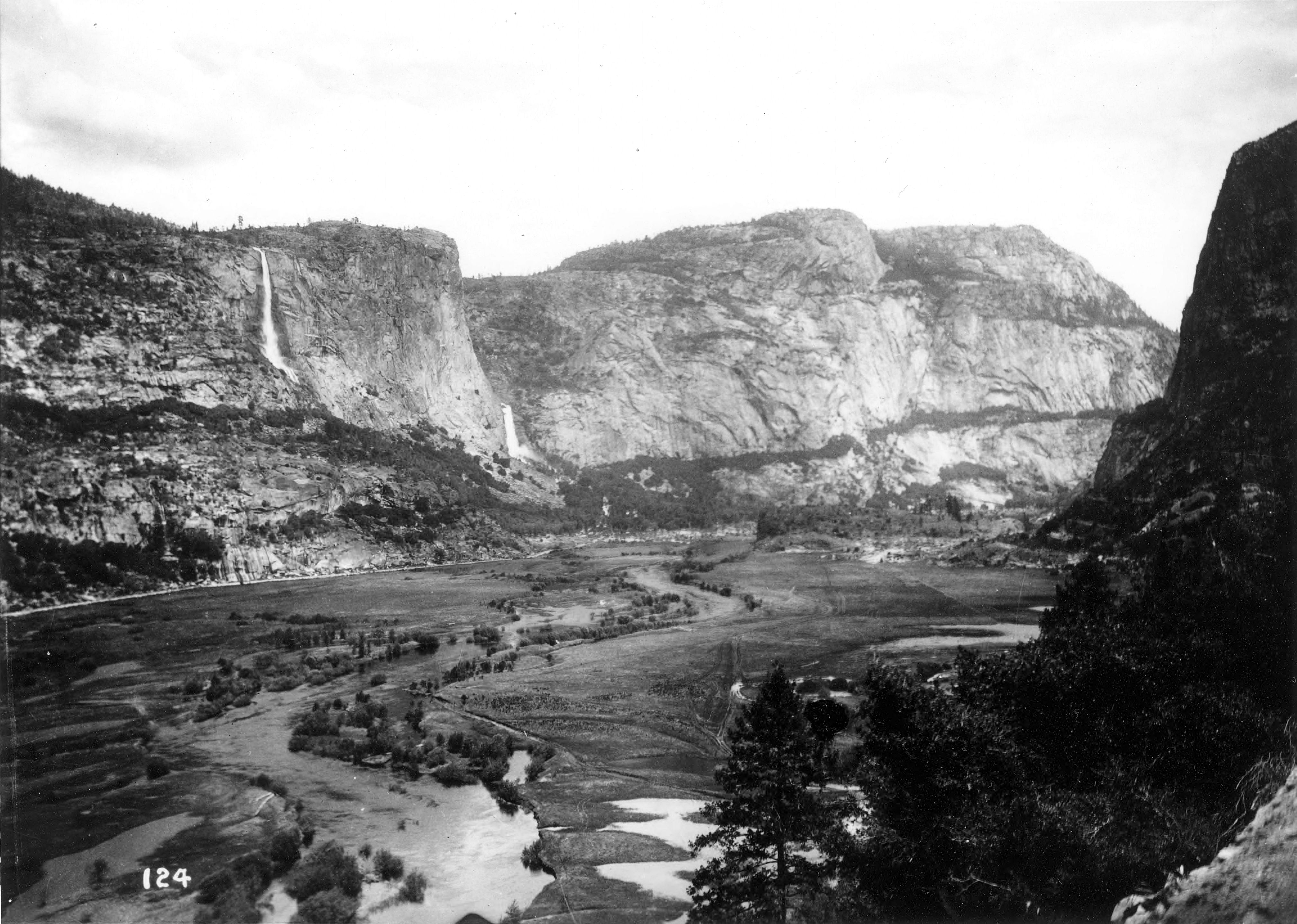A Cleaner Future for Energy on Federal Lands

NOTE: Dr. Eric Edwards recently spoke at “A cleaner future for energy on federal lands” webinar. This article has been adapted from that talk.
One of the first things President Biden did when he assumed office was issue an executive order placing a moratorium on the sale of any new leases for oil and gas on federal land—at least until the Department of the Interior completes a review of climate impacts. What does that mean and how will it affect our national parks and lands?
A concept I teach in all my economics courses is opportunity cost. Opportunity cost is the best alternative foregone when we choose to use a resource in a particular way. In everyday life, it’s usually just the cost of a thing. If I go out to eat and get the fillet, I don’t have that $50 to spend on something else.
But what is the opportunity cost when there aren’t prices. On public lands, finding the opportunity cost of an action is a long and ongoing battle: Which resource benefits count? Which groups count?
Let’s start with the opportunity forgone by ending oil and gas drilling on federal lands: the income from these programs. This may be high or low. For instance, recent oil and gas lease auctions in Arctic National Wildlife Refuge (ANWR) resulted in relatively low bids. The bids makes it clear, in monetary terms, what we lose by disallowing fossil fuel extraction.

What about the opportunity cost of continuing fossil fuel extraction? I am a heavy user of our public lands for outdoor recreation. Here in North Carolina I frequent our western National Forests and eastern National Seashores. My enjoyment of public lands illustrates an opportunity cost. Oil and gas drilling can create environmental damage through spills and erosion. The carbon emissions from oil and gas extraction (and eventual use) release CO2 into the atmosphere and contribute to climate change.
The extraction of oil and gas is also not aesthetically pleasing. This aspect struck me while visiting 9-Mile Canyon in Utah, which is world-renowned for its rock-art sites. I viewed the oil and gas extraction activities in the area as reducing the aesthetic and cultural value of visitors to the area and sites.
However, these recreational and non-use values (the value of knowing a beautiful area is preserved for future generations, for instance) are far more difficult to value.
It is not surprising, given the difficulty in valuing non-extractive uses, that federal lands have been managed historically for extractive use. Non-extractive uses and especially non-use values have become to focus of environmental advocates. While non-use values are legitimate economic values, they often don’t generate revenue or help fund management.
In our work on the National Park Service, we discuss the difficulties early advocates of non-use values had in convincing politicians to preserve land. Hetch Hetchy Valley in Yosemite was dammed for drinking water use exclusively for San Francisco, in large part because advocates were unable to convince political leaders to consider non-use values for a beautiful, but lightly utilized valley.
These issues remain today. America’s “Crown Jewels,” the National Parks, are underfunded. Many of the most visited parks have hundreds of millions in backlogged maintenance despite increasing use and congestion.
Maintaining consistent public investment in public lands is an ongoing political challenge, especially when the lands are often in western states with powerful conservative senators skeptical of federal oversight. Without oil and gas or other extractive revenues, what mechanism will the country use to keep its public lands healthy? Without support from western politicians, will federal allocations be commensurate with the needs of public land management agencies?

This brings us to NEPA, an administrative act that requires a review, and in some cases, a full report on the environmental impacts of proposed federal projects. The future of NEPA has been sharply debated recently.
On the one hand, NEPA encourages the explicit consideration of the opportunity cost of extractive resource use. Environmental damage is often directly tied to the non-use land values that are hard to quantify.
On the other hand, the administrative process is burdensome and costly in two ways. First, there are the costs of paying (typically a consultant) to do a thorough project analysis and for agency oversight and administration of the process.
Second, there is an opportunity cost—this is something we show in our work on oil and gas extraction in Wyoming. When NEPA delays projects, they are less likely to be undertaken, and over time less likely to be proposed. For instance, we show that operating a well on federal land is almost $700,000 more expensive due to the regulatory burdens like NEPA. While in the 1950s and 60s more exploration and extraction actually occurred on federal lands, by the 2000s these costs had resulted in 19% less drilling on federal relative to identical private lands.
These issues are even starker on American Indian reservations. The United States holds most of the land of these groups in trust, meaning tribal autonomy exists under the control of the Department of Interior.
Like public lands generally, the issue of what values matter and who makes decisions about tribal lands looms large. Here, though, the moral and economic case for agency jurisdiction, rather than tribal, is much weaker.
Tribes have difficulties accessing capital and tribal members in some areas lack basic services like medical care and running water. These issues have been linked to a lack of secure rights to their land and water, as well as a history of discrimination by the US government.
This raises key questions: Should a federal ban on energy extraction apply to sovereign lands on reservations? Should sovereign tribal governments be compelled to undergo NEPA reviews, while their neighbors on private land do not face the same scrutiny?
What about the future of energy extraction? I think a personal anecdote sets the stage for some more speculation on the future.

I grew up in Idaho, which has the highest percentage of Forest Service land of any state. My grandfather moved to Idaho to get a degree in forestry and work in logging prior to WWII. In his lifetime, the use of federal forest land changed dramatically.
The town my dad grew up in, Coeur d’Alene, transitioned from a logging town with multiple sawmills to a tourist (and now tech) city. The lakeside sawmills became condos and a world-class golf course. The town and its average resident have become richer.
My grandfather was never comfortable with these changes. And other Idaho towns reliant on timber extraction may have fared more poorly. But in retrospect, the changes were economically inevitable.
The same is true for the energy transition on public lands. As the world transitions away from fossil fuels, the economics of fossil fuel extraction are going to become more difficult. This doesn’t mean everyone will be comfortable or happy with this change. But, it is probably inevitable.
However, we shouldn’t learn the wrong lessons from the transition. There is an opportunity costs of not drilling, even if we prefer recreation or conservation. Natural gas may be an important bridge fuel to a carbon-free future. If NEPA or drilling moratoriums and closures limit extraction, there may even be consequences in meeting overall emission goals.
To conclude, I provide three general recommendations:
1. Avoid uniform bans but account for the true environmental costs in energy decisions. (Economists generally don’t like uniform bans because they don’t make allocation decisions on the margin.)
2. Find ways to ensure environmental values are considered while not imposing long delays under the National Environmental Policy Act.
3. Proactively address what is likely to be a politically difficult transition by finding alternative funding sources for communities and activities (e.g. recreation) that are currently supported by oil and gas revenues.
- Categories:


